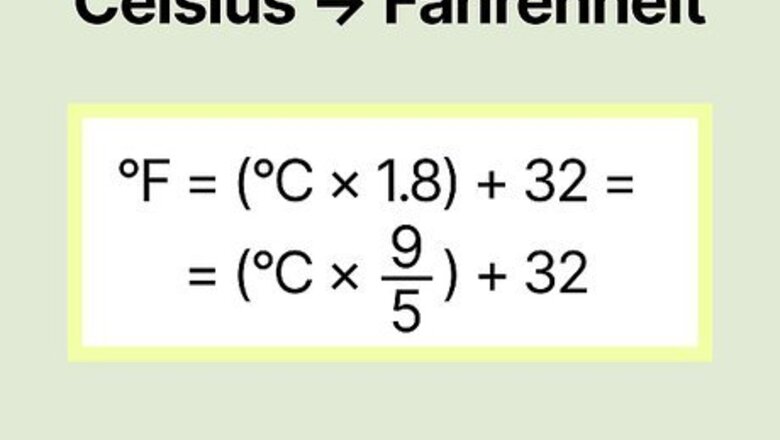
views
- Convert Celsius to Fahrenheit using the °F = (°C x 1.8) + 32 or °F = °C x + 32 formula.
- Convert Fahrenheit to Celsius with the °C = (°F - 32) x formula.
Celsius to Fahrenheit Formula
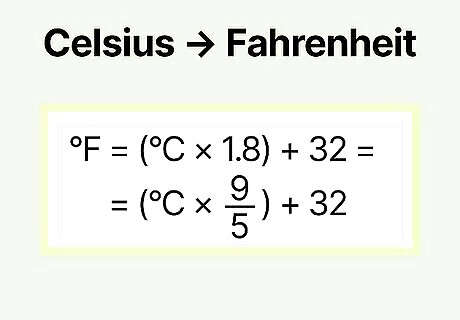
Use °F = (°C x 1.8) + 32 to convert Celsius to Fahrenheit. You may also use the equation °F = °C x 9 5 {\displaystyle {\frac {9}{5}}} {\displaystyle {\frac {9}{5}}} + 32, which will produce the same answer since 9 5 {\displaystyle {\frac {9}{5}}} {\displaystyle {\frac {9}{5}}} = 1.8. Plug any Celsius temperature into either equation to convert it to Fahrenheit.
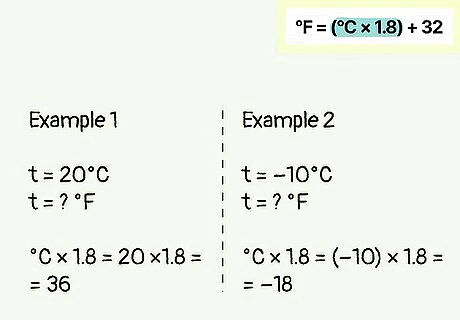
Multiply the Celsius temperature by 1.8 to get started. Feel free to use a calculator if you’re crunched for time, or if you’d rather not do the math by hand. Example 1: If the Celsius temperature is 20, multiply 20 by 1.8 to get 36. Alternatively, multiply the temperature (20) by 9, which equals 180, then divide 180 by 5, which equals 36. Example 2: If the Celsius temperature is -10, multiply -10 by 1.8 to get -18. Alternatively, multiply the temperature (-10) by 9, which equals -90, and then divide by 5—this also gives you -18.
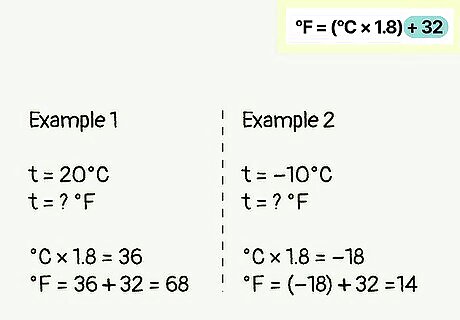
Add 32 to the multiplied product to get the temperature in Fahrenheit. After multiplying the temperature by 1.8 (or by 9, then dividing by 5), add 32 to the answer. Example 1: Add 32 to 36, which equals 68. So, 20°C is equal to 68°F. Example 2: Add 32 to -18, which equals 14. So, -10°C is equal to 14°F.
Fahrenheit to Celsius Formula
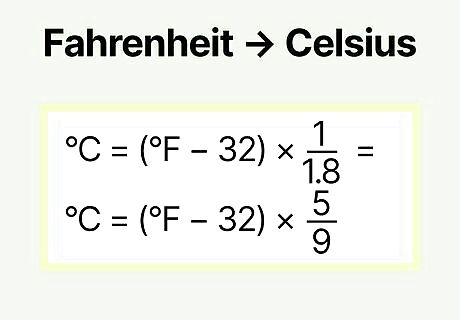
Use °C = (°F - 32) x 5 9 {\displaystyle {\frac {5}{9}}} {\frac {5}{9}} to convert Fahrenheit to Celsius. Simply plug in any Fahrenheit temperature and do the math to convert °F to °C. You may also use the equation °C = (°F - 32) ÷ 1.8 {\displaystyle \div {1.8}} {\displaystyle \div {1.8}}, which will produce the same answer since dividing by 1.8 is the same as multiplying by 1 1.8 {\displaystyle {\frac {1}{1.8}}} {\displaystyle {\frac {1}{1.8}}} = 5 9 {\displaystyle {\frac {5}{9}}} {\frac {5}{9}}
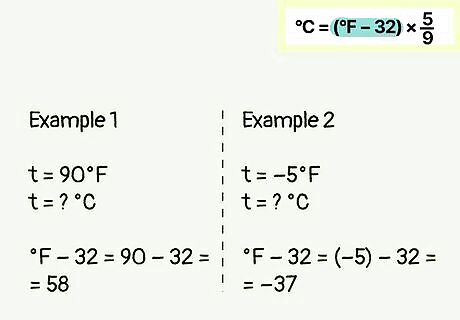
Subtract 32 from the Fahrenheit temperature to begin. The first step is to take away 32 from the temperature in Fahrenheit. Example 1: If the Fahrenheit temperature is 90, subtract 32 from 90 to get 58. Example 2: If the Fahrenheit temperature is -5, subtract 32 from -5 to get -37.
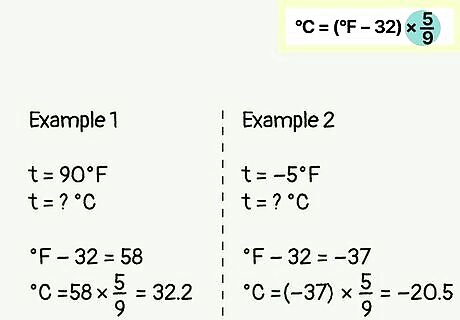
Multiply the subtracted difference by 5 9 {\displaystyle {\frac {5}{9}}} {\frac {5}{9}} to get the temperature in Celsius. After subtracting 32 from the temperature, multiply the answer you calculated by 5 9 {\displaystyle {\frac {5}{9}}} {\frac {5}{9}} (or 0.55). Example 1: Multiply 58 1 {\displaystyle {\frac {58}{1}}} {\displaystyle {\frac {58}{1}}} by 5 9 {\displaystyle {\frac {5}{9}}} {\frac {5}{9}}, which gives you 290 9 {\displaystyle {\frac {290}{9}}} {\displaystyle {\frac {290}{9}}}. Divide this fraction to get 32.2—thus, 90°F is equal to 32.2°C. Example 2: Multiply − 37 1 {\displaystyle {\frac {-37}{1}}} {\displaystyle {\frac {-37}{1}}} by 5 9 {\displaystyle {\frac {5}{9}}} {\frac {5}{9}}, which gives you − 185 9 {\displaystyle {\frac {-185}{9}}} {\displaystyle {\frac {-185}{9}}}. Divide this fraction to get -20.5—thus, -5°F is equal to -20.5°C. Keep in mind that 0.55 is actually short for 0.5555555555555556—so, only use the abbreviated decimal in your formula if you don’t need a precise conversion. It is more accurate to divide the subtracted difference by 1.8 instead of multiplying by 0.55, as it does not incur the loss of precision.This is because 1 1.8 {\displaystyle {\frac {1}{1.8}}} {\displaystyle {\frac {1}{1.8}}} = 10 18 {\displaystyle {\frac {10}{18}}} {\displaystyle {\frac {10}{18}}} = 5 9 {\displaystyle {\frac {5}{9}}} {\frac {5}{9}} exactly. Example 1: Divide 58 {\displaystyle 58} {\displaystyle 58} by 1.8 {\displaystyle 1.8} {\displaystyle 1.8}, which gives you 32.2—thus, 90°F is equal to 32.2°C, as above. Example 2: Divide − 37 {\displaystyle -37} {\displaystyle -37} by 1.8 {\displaystyle 1.8} {\displaystyle 1.8}, which gives you -20.5—thus, -5°F is equal to -20.5°C, as above.














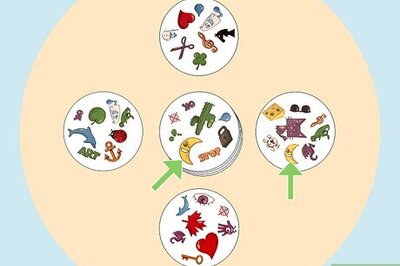


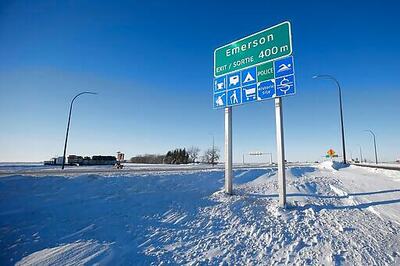




Comments
0 comment